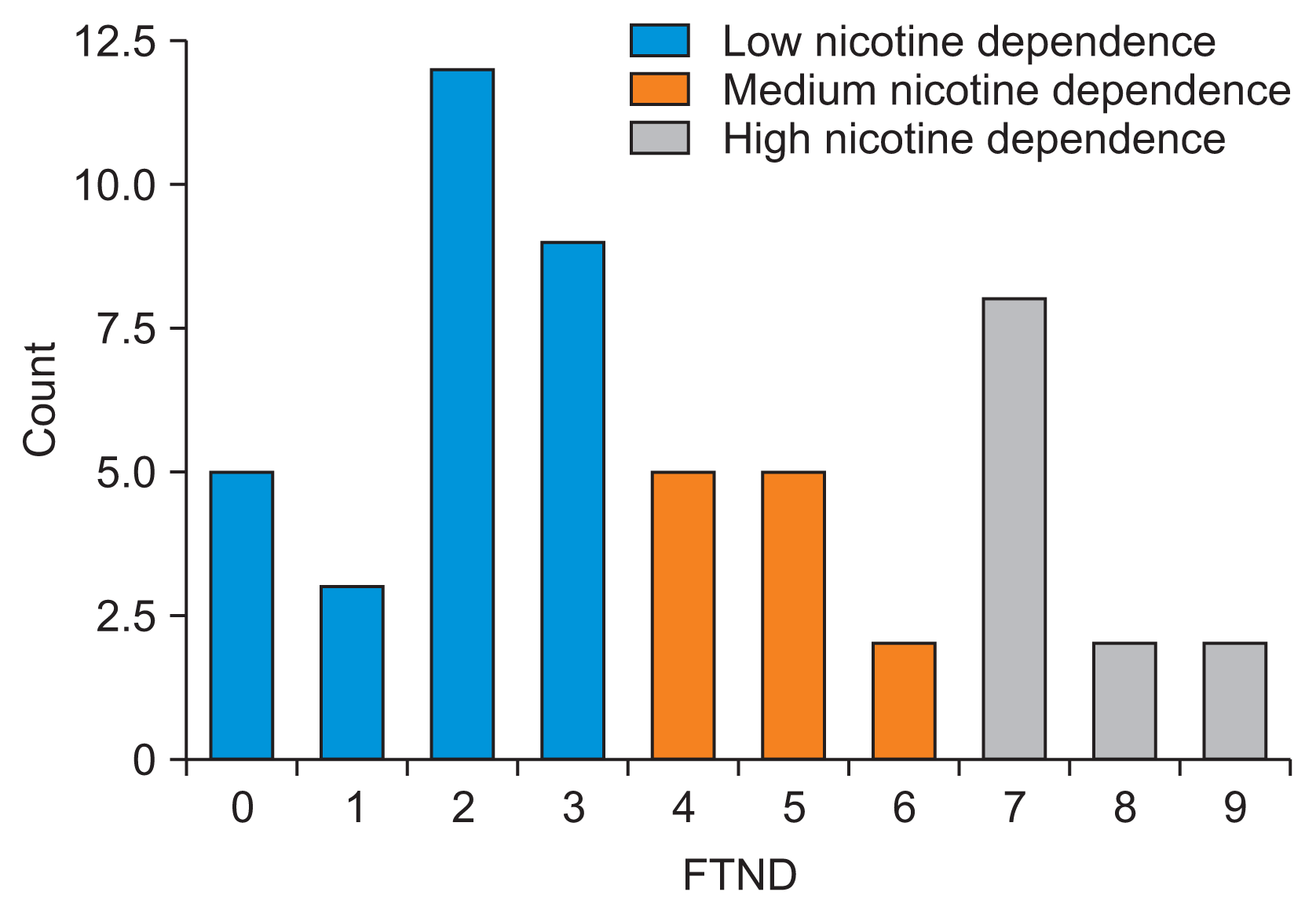3. World Health Organization. WHO report on the global tobacco epidemic, 2017: monitoring tobacco use and prevention policies [Internet]. Geneva, Switzerland: World Health Organization;2017. [cited at 2024 Jul 10]. Available from:
https://www.who.int/publications/i/item/9789241512824.
4. World Health Organization. WHO global report on trends in prevalence of tobacco use 2000–2025, fourth edition [Internet]. Geneva, Switzerland: World Health Organization;2021. [cited at 2024 Jul 10]. Available from:
https://www.who.int/publications/i/item/9789240039322.
6. Chean KY, Goh LG, Liew KW, Tan CC, Choi XL, Tan KC, et al. Barriers to smoking cessation: a qualitative study from the perspective of primary care in Malaysia. BMJ Open. 2019; 9(7):e025491.
https://doi.org/10.1136/bmjopen-2018-025491.

8. Rollema H, Chambers LK, Coe JW, Glowa J, Hurst RS, Lebel LA, et al. Pharmacological profile of the alpha4beta2 nicotinic acetylcholine receptor partial agonist varenicline, an effective smoking cessation aid. Neuropharmacology. 2007; 52(3):985–94.
https://doi.org/10.1016/j.neuropharm.2006.10.016.

10. Iacoviello BM, Steinerman JR, Klein DB, Silver TL, Berger AG, Luo SX, et al. Clickotine, a personalized smartphone app for smoking cessation: initial evaluation. JMIR Mhealth Uhealth. 2017; 5(4):e56.
https://doi.org/10.2196/mhealth.7226.
11. Yu SH, Kim MJ, Jeon J, Park HK, Hwang HS, Park KY. Short-term success rates of smoking cessation support programs and factors predicting smoking relapse: using data from a smoking cessation clinic in a hospital. Korean J Fam Med. 2019; 40(6):373–9.
https://doi.org/10.4082/kjfm.18.0094.

12. Oh SW. The current status and challenges of national smoking cessation support program in Korea. Korean J Fam Med. 2019; 40(6):351–2.
https://doi.org/10.4082/kjfm.40.6E.

13. Rajani NB, Bustamante L, Weth D, Romo L, Mastellos N, Filippidis FT. Engagement with gamification elements in a smoking cessation app and short-term smoking abstinence: quantitative assessment. JMIR Serious Games. 2023; 11:e39975.
https://doi.org/10.2196/39975.

14. Borrelli B, Bartlett YK, Tooley E, Armitage CJ, Wearden A. Prevalence and Frequency of mHealth and eHealth Use Among US and UK Smokers and Differences by Motivation to Quit. J Med Internet Res. 2015; 17(7):e164.
https://doi.org/10.2196/jmir.4420.

15. Tobacco Use and Dependence Guideline Panel. Treating Tobacco Use and Dependence: 2008 Update. Rockville (MD): US Department of Health and Human Services;2008. [cited at 2024 Jul 10]. Available from:
https://www.ncbi.nlm.nih.gov/books/NBK63952/.
17. Becker S, Kribben A, Meister S, Diamantidis CJ, Unger N, Mitchell A. User profiles of a smartphone application to support drug adherence: experiences from the iNephro project. PLoS One. 2013; 8(10):e78547.
https://doi.org/10.1371/journal.pone.0078547.

19. Eum YH, Kim HJ, Bak S, Lee SH, Kim J, Park SH, et al. Factors related to the success of smoking cessation: a retrospective cohort study in Korea. Tob Induc Dis. 2022; 20:15.
https://doi.org/10.18332/tid/144272.

20. Nazari E, Asgari P, Aghemiri M, Shahriari MH, Zangeneh A, Tabesh H. Developing a questionnaire for mobile phone usage pattern among university students using the Delphi method. Front Health Inf. 2021; 10(1):52.
https://doi.org/10.30699/fhi.v10i1.241.

21. Jafari A, Peyman N, Gholian-Aval M, Mahdizadeh M, Tehrani H. Design and evaluation of psychometric properties of cigarette smoking tendency questionnaire for female adolescents (CTQFA). BMC Public Health. 2021; 21(1):1746.
https://doi.org/10.1186/s12889-021-11784-8.

22. Borland R, Yong HH, O’Connor RJ, Hyland A, Thompson ME. The reliability and predictive validity of the Heaviness of Smoking Index and its two components: findings from the International Tobacco Control Four Country study. Nicotine Tob Res. 2010; 12:Suppl. S45–50.
https://doi.org/10.1093/ntr/ntq038.

23. Shankar D, Borrelli B, Cobb V, Quintiliani LM, Palfai T, Weinstein Z, et al. Text-messaging to promote smoking cessation among individuals with opioid use disorder: quantitative and qualitative evaluation. BMC Public Health. 2022; 22(1):668.
https://doi.org/10.1186/s12889-022-13008-z.

27. Spears CA, Bell SA, Scarlett CA, Anderson NK, Cottrell-Daniels C, Lotfalian S, et al. Text messaging to enhance mindfulness-based smoking cessation treatment: program development through qualitative research. JMIR Mhealth Uhealth. 2019; 7(1):e11246.
https://doi.org/10.2196/11246.

29. Lee DG, Lee S, Park HJ. Validation of the Korean version of the Locus of Evaluation Inventory. Korean J Counsel Psychother. 2008; 20(1):65–82.
30. Shoukat S. Cell phone addiction and psychological and physiological health in adolescents. EXCLI J. 2019; 18:47–50.




 PDF
PDF Citation
Citation Print
Print




 XML Download
XML Download